The Loire Valley
In which I take A Little Tour in France with the 19th-century American novelist Henry James.
The word is full of mysteries and wonders, waiting to be discovered by those who have the courage to seek them out.
- Henry James
The American novelist Henry James first visited France when he was twelve years old. The year was 1855, and his parents - both from privileged backgrounds - had brought their small family to Europe for an extended stay. The James family would spend the years 1855-1860 in Europe, with Henry and his siblings being educated via a series of private tutors. Henry James returned in his twenties for an extended tour of the continent. He found that Europe agreed with him, and moved to Paris in 1875, before finally settling in England the following year. He spent the rest of his life in England, never returning to the United States save for a few short trips, but traveled extensively in Europe spending months at a time in Venice and other European cities. In 1882 he embarked on an extended tour of France, purposefully avoiding the capital to travel through the French countryside.
France may be Paris, but Paris is not France…
-Henry James
He started his tour in Touraine and the Loire Valley, before moving on to southern France and Provence, and finally looping his way back up to Burgundy. He wrote about his journey in installments for the Atlantic Monthly in 1883, and the following year published his writings in book form. A Little Tour in France was the result. Henry James’s detailed and descriptive writing style is particularly well suited to travel writing, and A Little Tour in France is considered a classic of Victorian travel literature.
This is, moreover, the heart of the old French monarchy; and as that monarchy was spendid and picturesque, a reflection of the splendor still glitters in the current of the Loire.
-Henry James
The Loire River runs for over 600 miles through France, but the stretch just southwest of Paris is the most famous. It was here that French monarchs built grand castles - chateaux in French - starting at the height of the French Renaissance. Of course, where the kings went others followed, and the Loire Valley soon filled with castles and country houses built by members of the nobility and wealthy merchants. In all, over 1,000 chateaux - large and small, royal and private - were built in the region, most in the 15th and 16th centuries.
The beautiful, restrained elegance of the Renaissance chateaux of the Loire Valley fell out of fashion in the 17th & 18th centuries, replaced by the over-the-top opulence of palaces like Versailles. Slowly, the monarchy left the valley, and even the royal castles fell into private hands. In scenes that are reminiscent of Elizabeth Bennett knocking on the door of Pemberley when she believes Mr. Darcy is out of town in Pride and Prejudice, Henry James writes of approaching these grand houses at night, to appeal to the housekeepers for entry, and for a private tour.
It is the land of Rabelais, of Descartes, of Balzac, of good books and good company, as well as good dinners and good houses.
-Henry James
Today, this stretch of the Loire Valley is a UNESCO World Heritage Site - there’s no knocking on private doors these days, the most famous and historic chateaus are freely open to the public. Visitors come to enjoy the beautiful landscape and graceful architecture of the valley, but also to drink wine made from vineyards planted when the kings of France called the Loire Valley home.
In 1882 Henry James chose the city of Tours as his home base, but on my visit I stay in the smaller city of Blois, a bit further east down the river and home to a royal castle, the cleverly named Chateau de Blois. It is a national holiday when I arrive in Blois: La Fête du Travail - Labor Day, the first of May.
The long facade, consisting only of balconied windows deeply recessed, erects itself on the summit of a considrable hill, which gives a fine, plunging movement to its foundation…The deep niches of the windows are all aglow with coloor. They have been repainted with red and blue, relieved with gold figures; and each of them loooks more like the royal box at a theatre than like the aperture of a palace daark with memories.
-Henry James
{Blois, France}
If there’s anything prettier than spring in the heart of France, I’m not sure I’ve seen it. Endless flowers bloom under the bluest of skies, filling the new air of spring with their welcome scent. Rivers and streams flow at a purposeful gate towards their destinations, birdsong abounds, and the streets are filled with people happy to be able to eat outside again after a long winter.
The first day of May is a brilliant, crisp morning. There is a small boulangerie down the street from the hotel, and I buy a croissant and café crème and then walk to a park just a few blocks away to relax for a few moments: to sit on a bench and watch locals walking their dogs and chatting with friends. The park is at the base of the royal castle, and as I sit on my bench looking up at its colorful facade, I think about another great American writer - Ernest Hemingway - who spent several years of his young married life in Paris, and who wrote that when spring came to France there were no problems except where to be happiest.
This exquisite, this extravagant, this transcendent piec of architecture is the most joyous utterance of the French Renaissance. It is covered with an embroidery of scupture, in which every detail is worthy of the hand of a goldsmith. In the middle of it, or rather a little to the left, rises the famous winding staircase, which even the ages which moost miused it must vaguely have admired. It forms a kind of chiselled cylinder, with wide interstices, so that the stairs are open to the air.
-Henry James
The Chateau de Blois was built over several centuries by a series of rulers, and the result is a chateau that is a bit of a hodge-podge. It sits looking over the town in a half-hazard manner, the front not matching the back, and neither one in harmony with the courtyard. That is not to say that it’s not beautiful - Henry James called the chateau at Blois, “This exquisite, this extravagant, this transcendent piece of architecture…” and wrote that it was “the most joyous utterance of the French Renaissance”. I’m not sure that I agree…I can’t help being a sucker for symmetry in architecture, and if there’s anything the Chateau de Blois is not, it’s symmetrical.
I will admit that the exterior spiral staircase is pretty spectacular, though, even if it does make me wonder about the cold air that is sure to blow right through those gaping holes…those gaping holes that Henry James eloquently calls “wide interstices” because he’s Henry James and I’m not. There’s no time for a tour today, though, because I’m off to visit the Grande Brocante de Chambord - the huge flea market held every May Day on the grounds of the nearby Chateau de Chambord.
The towers, the turrets, the cupolas, the gables, the lanterns, the chimneys, look more like the spires of a city than the salient points of a single building. You emerge from the avenue and find yourself at the foot of an enormous fantastic mass.
-Henry James
{Chambord}
There’s more black coffee at Chambord, and the buttery, big-as-your-head local cookies known as Broyés de Poitou. I have been to hundreds of flea markets in my life, but it is a special treat to wander the stalls in the shadow of the Chateau of Chambord. The building is creamy white and massive - easily the largest chateau in the Loire Valley - and surrounded by a sea of green fields. Its bulk is only accentuated by its isolation. Although today it is under construction and surrounded by antique vendors, it is still easy to see why Henry James compared the roof to the skyline of a city. It’s an architectural party up there, with spires and cupolas, follies and buttresses.
Built in the early 16th century by King Francis I, whose main residence was the Chateau de Blois, Chambord was meant not as a home but as a hunting lodge. An over-the-top, 440-room, 282-fireplace elaborate fortress of a hunting lodge. It was a folly, to put it simply…the whim of a king. And more than that, of course, it was a symbol of power and of wealth.
Why did Francis I build his great lodge in what was at the time a relatively isolated location? Not for ease of transport. Not, Henry James says, because of the excellent hunting to be had nearby. The truth, he says, “…will ever remain an unanswered question, for kings have never been obliged to give reasons.” But, maybe, just maybe, he suggests with coy Victorian modesty, it was because it was close to the estate of his mistress, the Comptess de Thoury.
As her heraldic arms are carved into the masonry of the decor, it seems a pretty safe bet.
Due to its massive size and relative isolation, in centuries to come the chateau would suffer from what James called “royal indifference”. Amazingly, despite the massive cost and labor required to build Chambord, Francis I spent only six weeks here in his lifetime. After that, it was owned over the years by a series of minor members of the nobility and when Henry James visited, he described it as “a pile” and said that “as impressive as it is, the Chateau of Chambord seems to have altogether a little of that quality of stupidity.”
I shall risk the accusation of bad taste if I say that, impressive as it is, the Chateau de Chambord seemed to me to have altogether a little of that quality of stupidity.
-Henry James
By 1930 - a generation after Henry James’ death - the colossal chateau was back in the hands of the French government. Nine years later, in August of 1939, over 200 transport vehicles arrived at the great empty chateau carrying almost 2,000 large wooden crates. The trucks had traveled under cover of darkness from Paris, and they carried just under 4,000 paintings from the Musée du Louvre, as well as sculpture and countless other treasures from the Musée de Cluny and other Parisian museums. The secret evacuation of the city’s treasures had been quickly and quietly organized, and when Nazi inspectors arrived to inspect the Louvre’s collection the following year, they found the museum empty.
Among the masterpieces brought to Chambord for safekeeping were the Winged Victory of Samothrace, Delacroix’s Liberty Leading the People, and of course the Mona Lisa. The artwork was inventoried upon arrival, and while some pieces stayed at Chambord, others were dispersed to other castles in the valley. Many of the paintings were kept on the move over the next five years, traveling from hiding place to hiding place until they were finally able to return home to Paris.
In coming to Chambord, the Mona Lisa was, in effect, coming home to the Loire Valley. Although by 1939 she had been in the collection of the Louvre for quite some time, it was Francis I who had brought her to France in the first place. She had come in the arms of her creator, Leonardo da Vinci, who had been lured to France by King Francis at the height of the Renaissance.
You may go to Amboise either from Blois or from Tours; it is about half-way between these towns. The great point is to go, especially if you have put it off repeatedly; and to go, if possible, on a day when the great view of the Loire, which you enjoy from the battlements and terraces, presents itself under a friendly sky.
-Henry James
{Amboise}
Henry James says that the thing to do is to visit Amboise when the beautiful view of the Loire from the Chateau d’Amboise presents itself under a friendly sky. I am lucky, the skies couldn’t be friendlier - they are bright and blue for the second day in a row.
The Chateau d’Amboise looks over the town of Amboise much like the Chateau of Blois looks down on the city of Blois. Henry James writes about the view of the Loire from the terrace, and he is right - it is a delight on this lovely spring day. But I like the view the other way just as well, looking back over the town: a hundred little grey slate roofs crisscross their way back toward a church in the distance. It’s so French. From the terrace you can look down on the bustling little main street that runs through town - it is lined with cafés and shops, bakeries and confectionaries, and people. Lots and lots of people.
Somewhere below the crowds of people, below the cobblestone streets, is a secret tunnel. It runs from the royal Chateau d’Amboise to a much quieter, much smaller chateau about a half mile away. This is the Chateau de Clos Lucé, and it’s where Leonardo da Vinci lived for the final years of his life.
Francis I was just 22 years old when he invited the 65-year-old Leonardo to the Loire Valley to be the “premier peintre et ingénieur et architecte du Roi” - the King’s first painter, engineer and architect. He was offered an extraordinarily generous pension and a dream project: design (another) castle for Francis I, that would serve as the seat of the monarchy in France. The aging artist was well aware of young whippersnappers like Raphael and Michelangelo nipping at his ankles in Italy - and the idea of retiring to a chateau near the king was appealing. And so he came. And when he came, he brought with him a few painting projects that he was working on: The Madonna and Child with Saint Anne, Saint John the Baptist, and, of course, Mona Lisa. All three paintings were purchased by the king, and all three are now in the collection of the French state and on display at the Louvre.
By all accounts, the king and the artist formed a close bond, close enough that the king built the tunnel underground so that he could visit Leonardo - or Leonardo could visit him - easily at any time of day or night.
Clos Lucé is a dream of a home. Leonardo da Vinci’s bedroom opens onto the gardens, filled with rose blossoms this time of year. The lily of the valley is the symbol of May Day in France, and on this visit the house is filled with the tiny bell-like flowers. Leonardo’s study and workroom have been re-created, as have many of his inventions, built from his original drawings.
Leonardo only lived for three years before his death at Clos Lucé, and he is buried in Amboise. His sketches for Francis I’s new castle were never realized. However, it is believed that some of his drawings were used as inspiration for the famous double-helix staircase at the Chateau de Chambord. The massive staircase is at the very heart of the chateau, the structure from which all other rooms radiate.
The innovative staircase is an introvert’s dream - designed as two staircases that twist around each other but never meet. Visitors to the chateau could ascend and descend the two staircases at will, watching each other all of the time, waving and nodding but never crossing each other paths…. thus ensuring that they would never have to engage in small talk. To which I say bravo!
Leonardo: he’s just like us.
Chenonceaux is not large, as I say, but into its delicate compass is packed a great deal of history - history which differs from that of Amboise and BLois in beeing of the private and sentimental kind. The echoes of the place, fain and far as they are today arenot political, but personal.
-Henry James
{Chenonceau}
The ladies’ chateau.
I visited Chenonceau when I was in high school, and I had memories of it being a magical place. Even the name sounds lovely rolling off the tongue, doesn’t it? It’s interesting how it appears out of nowhere: to get to the chateau you drive endlessly through the countryside on small, twisting roads with not a soul in sight, and then all of sudden there you are in the town of Chenonceau with hundreds and hundreds of cars, and huge crowds of visitors milling about and standing in line. Where do they all come from?
Standing in line to enter, I can’t help but be surprised at how many Europeans travel with their dogs. There are dozens of dogs standing in line to visit Chenenceau with their owners. Dogs go everywhere here, it seems, even to royal castles. The dogs look mostly nonplussed, but I imagine them struggling to hide their excitement as they tell their little dog friends, “I’ve been begging them to bring me to Chenonceau for years…”
Seen obliquely, from either side, in combination with its bridge and gallery, the chateau is singular and fantastic, a striking example of a willful and capricious conception.
-Henry James
Chenonceau is a gorgeous chateau, built over the River Cher, near the Loire. It is a chateau steeped in the history of two extraordinary women: Catherine de Medici and Diane de Poitiers.
So far, the story of the Loire Valley has been all about King Francis I, but it is his son, Henry II - and his complicated love life - that is at the heart of the story of the Chateau of Chenoneau. Henry II was just six years old when his father was captured and taken prisoner by Charles V, Holy Roman Emporer and King of Spain. Francis negotiated his own release, but (kind of unbelievably) he offered his two young sons in exchange for his freedom. His sons were held hostage for four years, but legend has it that before he left, the six-year-old Henry was offered a kiss by a young lady of his father’s court, Diane de Poitiers. Henry never forgot the kiss, and the comfort it brought to him, and when he returned from Spain his friendship with Diane and her husband grew.
Diane helped to arrange Henry’s marriage at the age of fourteen to Catherine de Medici, of the wealthy Florentine Medici family. A year later, after the death of Diane’s husband, she would become Henry’s lover - and his lifelong companion. Henry was fifteen years old at the time, and Diane de Poitiers was thirty-five.
Henry became Henry II, King of France when he was twenty-eight years old, and upon his father’s death he inherited not only the kingdom and his bevy of royal castles, but the beautiful Chateau of Chenonceau, which had come into the possession of the royal family when it was seized from the family who built it for unpaid debts in 1535. Henry gifted the chateau to Diane de Poitiers, a move that enraged Queen Catherine, who had wanted Chenonceau for herself.
Diane de Poitiers was mistress of Chenonceau (and the king), for the rest of his life. She improved the chateau, added the gallery bridge over the river, and built exquisite gardens that were copied throughout Europe. Meanwhile, Catherine de Medici - at home in the Chateau de Blois - bore the king ten children. She became interested in the occult and employed a bevy of herbalists, scientists and astrologers - one of whom, Nostradamus, predicted that her husband would “pierce his eye through a golden cage”.
In 1559, King Henry II was jousting in a tournament to celebrate his daughter’s marriage, when he was mortally wounded with a lance through the eye. Instead of the colors of his queen, he was wearing the colors of Diane de Poitiers.
Upon her husband’s death, Catherine de Medici evicted Diane de Poitiers from Chenonceau - exiling her to the nearby Chateau de Chaumont (which, honestly, wasn’t the worst thing in the world. Chaumont is pretty nice). She built her own gardens, and a grand apothecary. She spent the rest of her life at Chenonceau, meddling in the affairs of her children - three of whom became kings of France.
I have seen more of France than I had ever seen before, and on the whole liked it better.
-Henry James
There is something unreal about a visit to the castles of Loire Valley. It’s a dreamland. A fairy tale. It feels like stepping into another time and place. Did people really live like that? Do they still?
And yet, at the end of the day, there it is - in the dueling gardens of Diane de Poitiers and Catherine de Medici at Chenonceau. These characters in the real-life fairy tales were still human - motivated by love and jealousy. Money and power. Revenge. Just like today.
“Life is, in fact, a battle”, Henry James wrote. “Evil is insolent and strong; beauty enchanting, but rare; goodness very apt to be weak; folly very apt to be defiant; wickedness to carry the day; imbeciles to be in great places, people of sense in small, and mankind generally unhappy.”
To be honest, though, I don’t really want to think about all of that, as I walk among the beautiful flowers and manicured lawns at Chenonceau. The problems of the world can wait for another day, right?
Sometimes it’s nice to enjoy the fairy tale, even if it’s just for a little while…



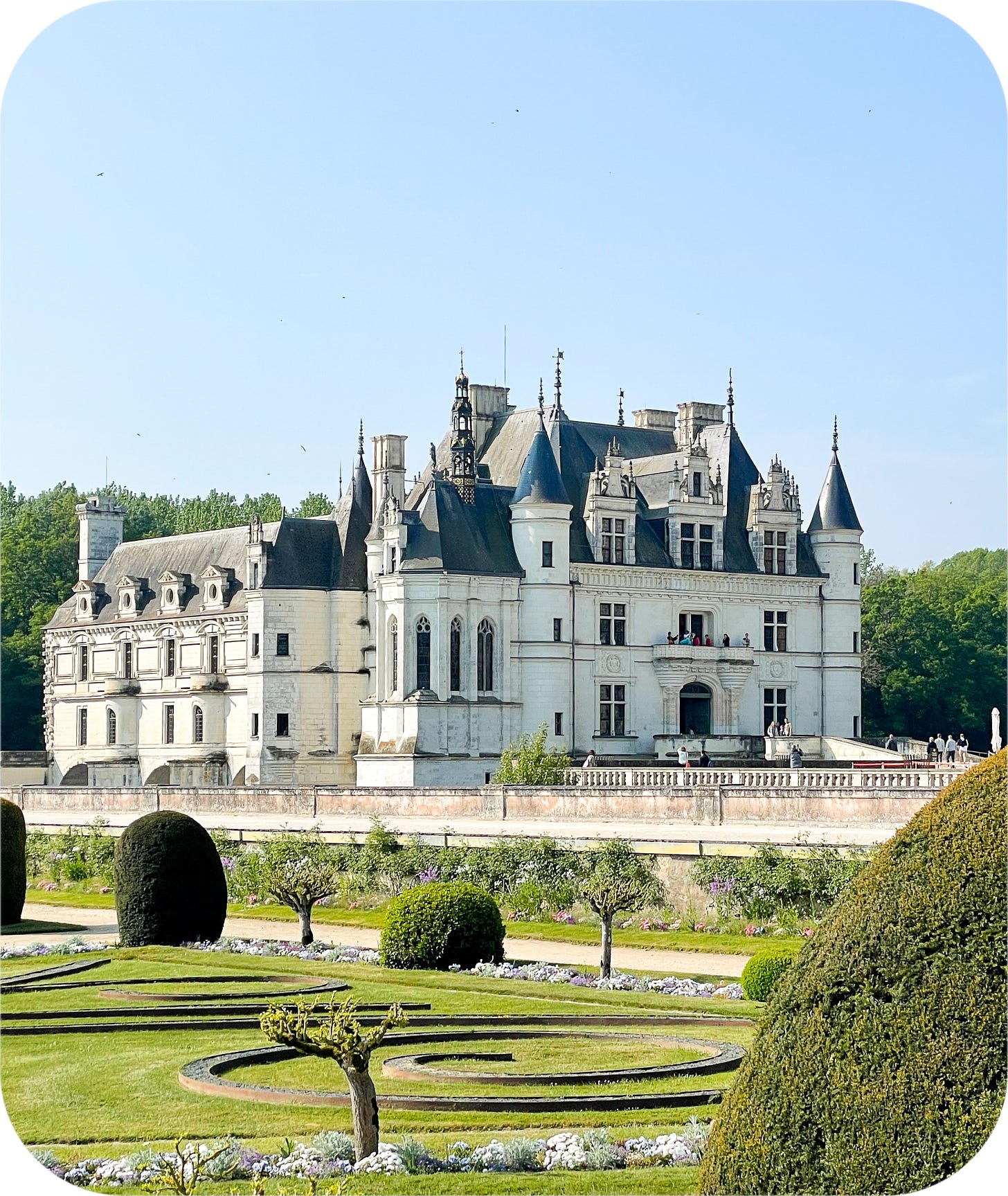

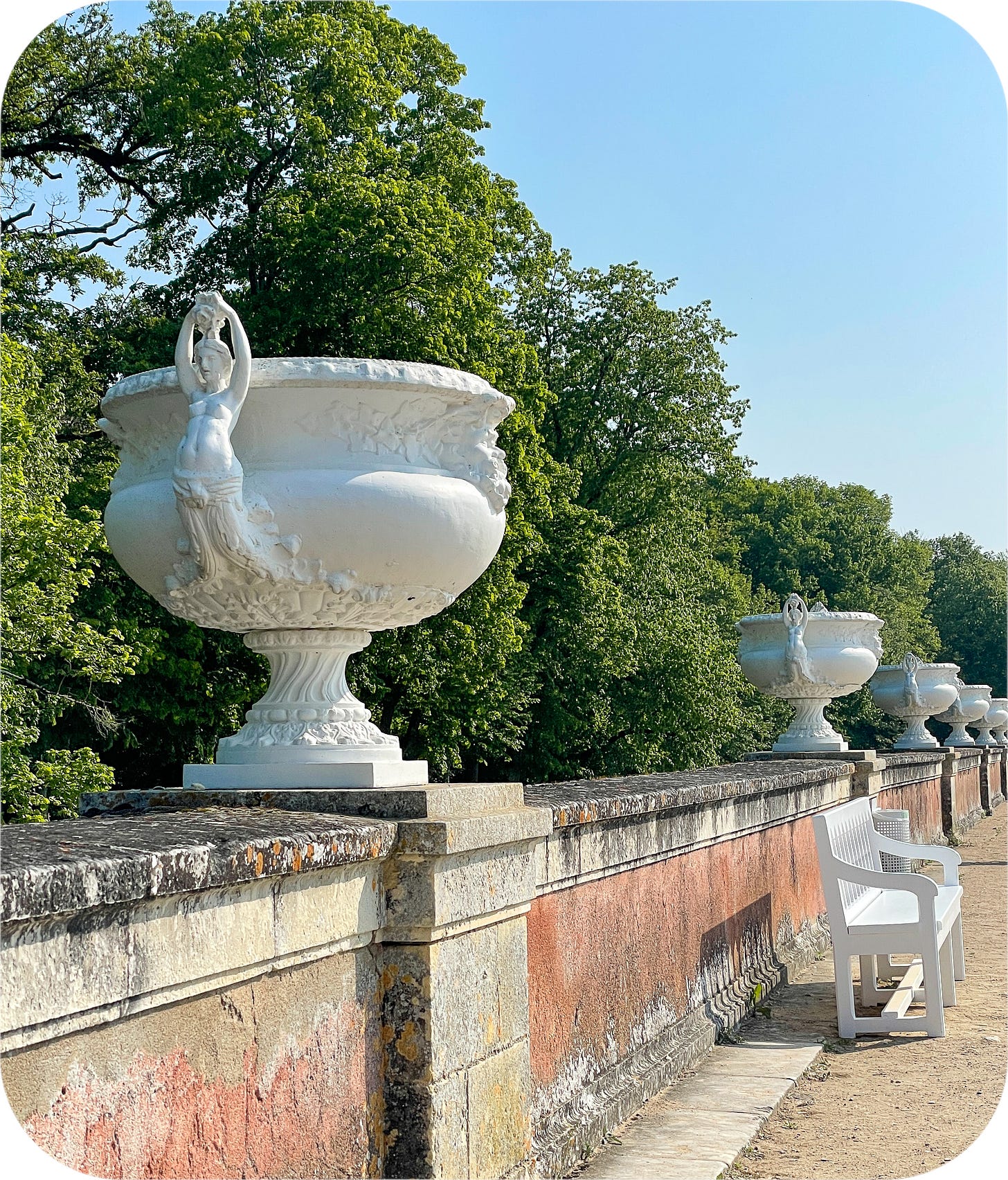
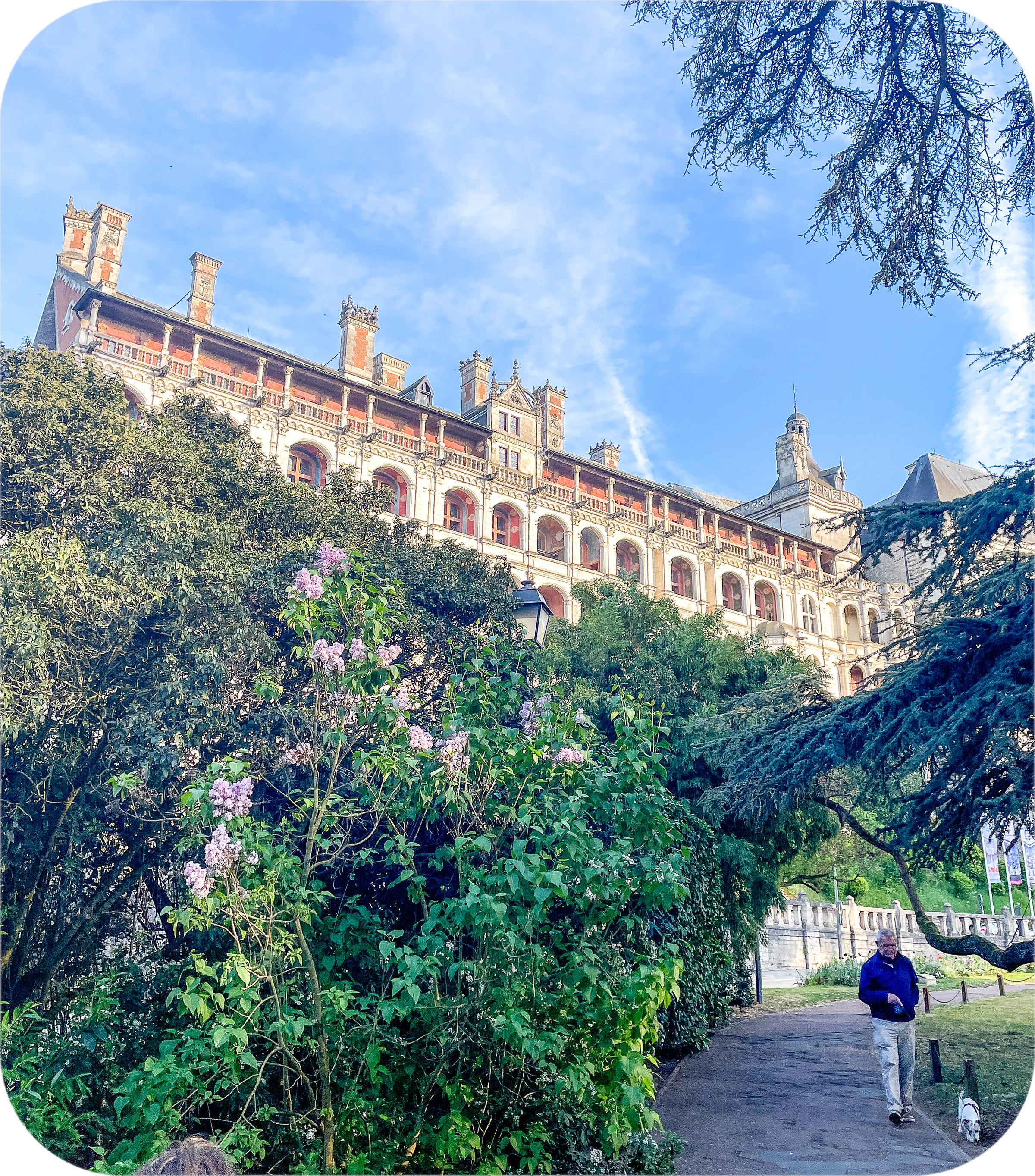
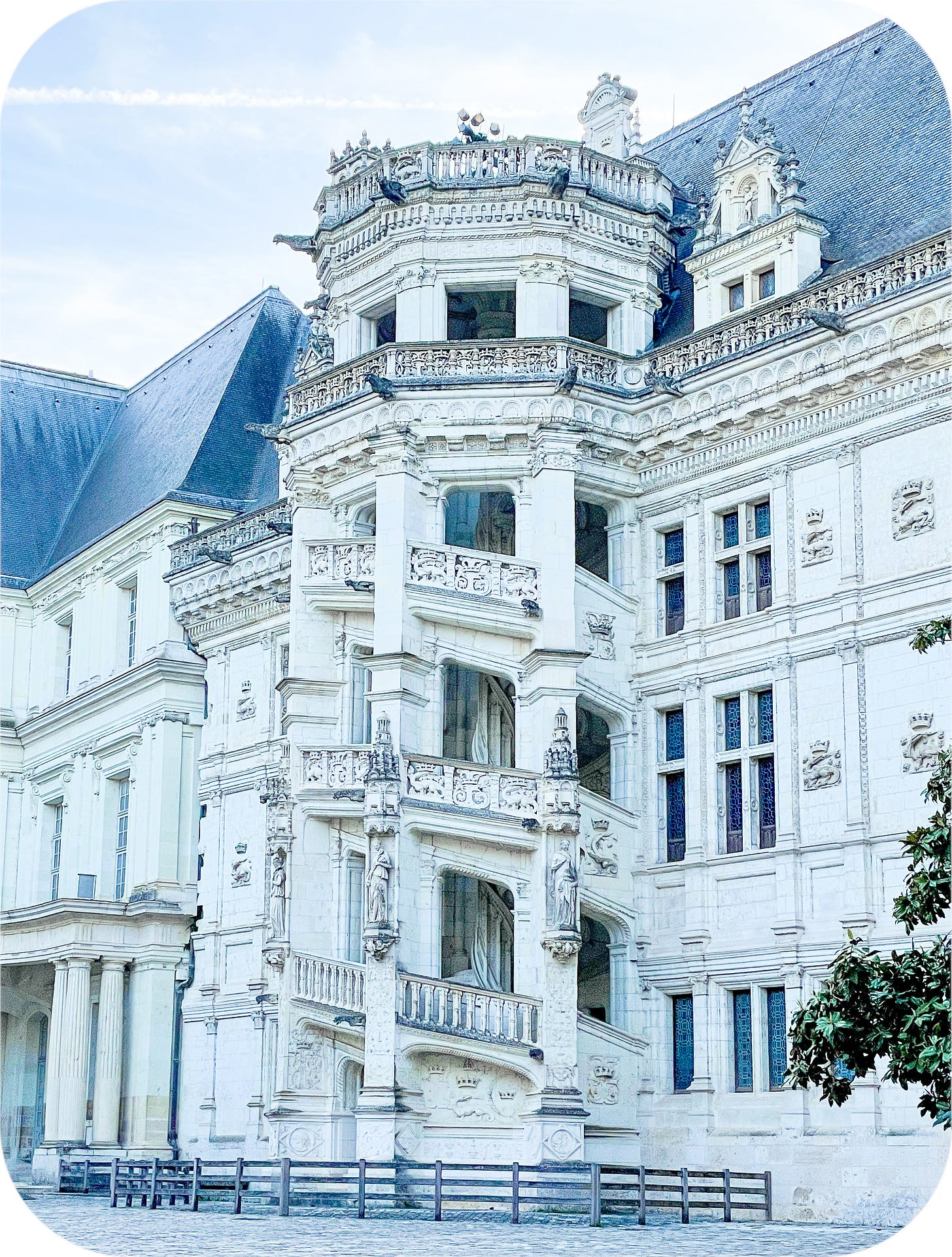
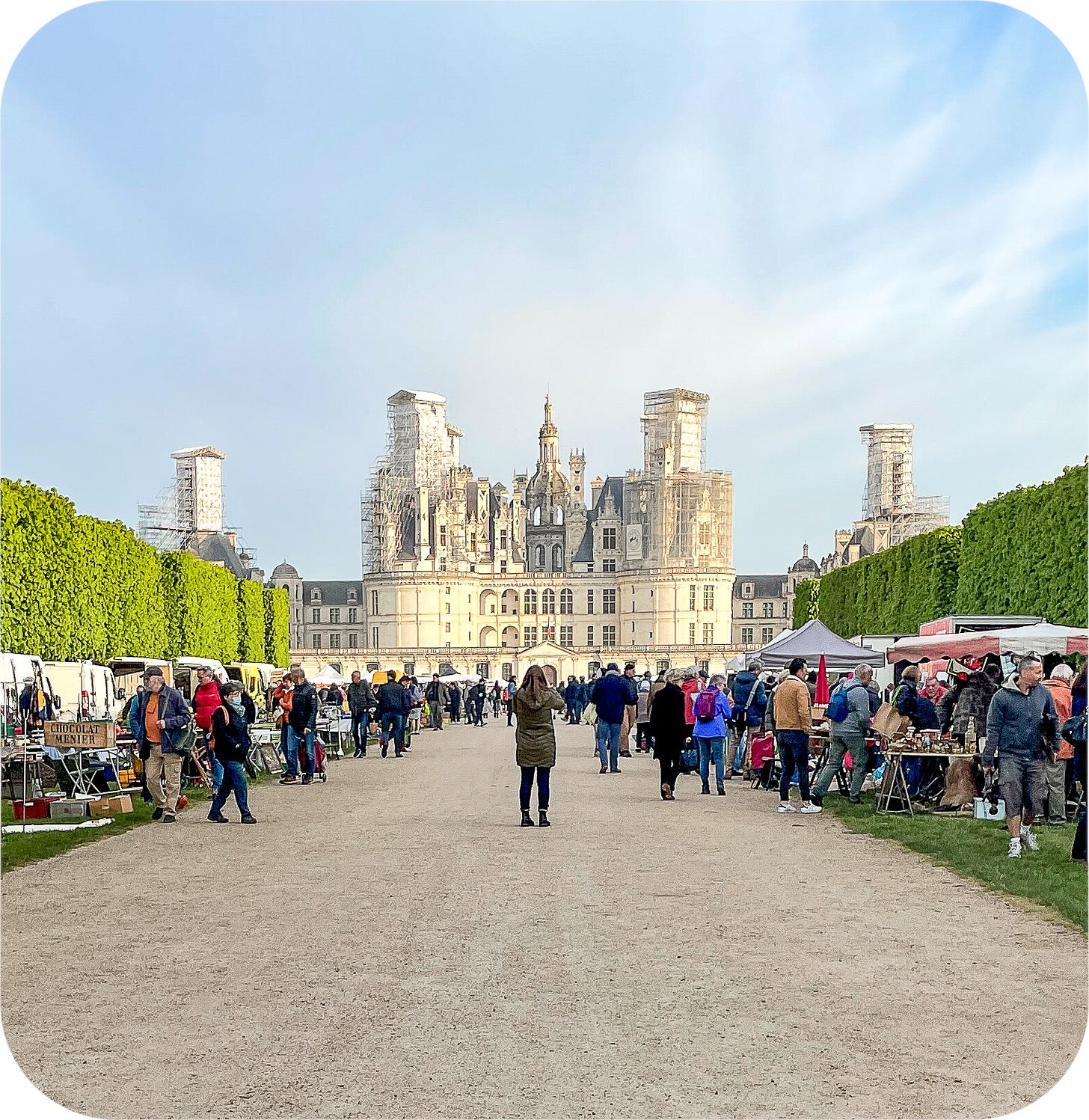
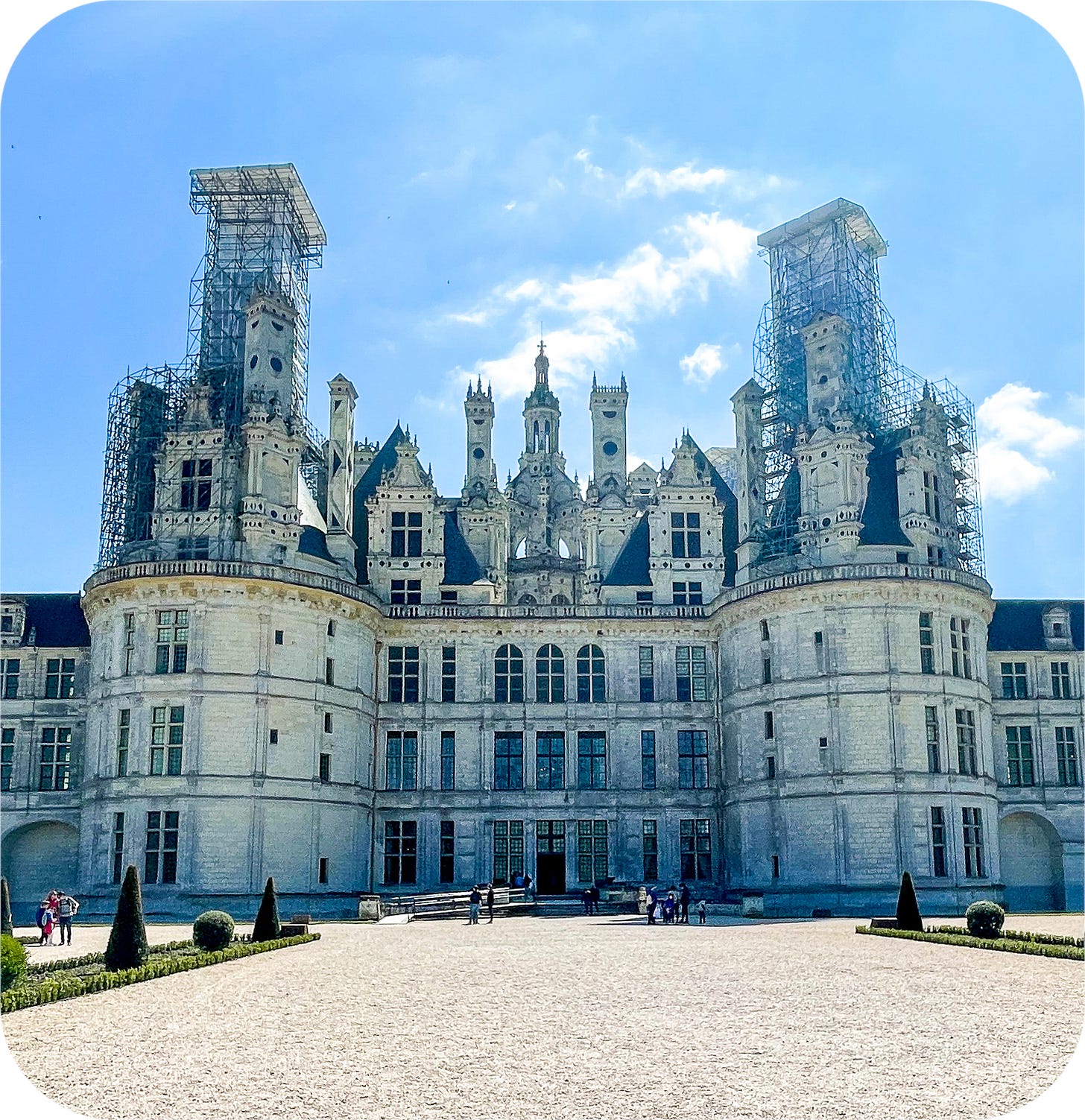

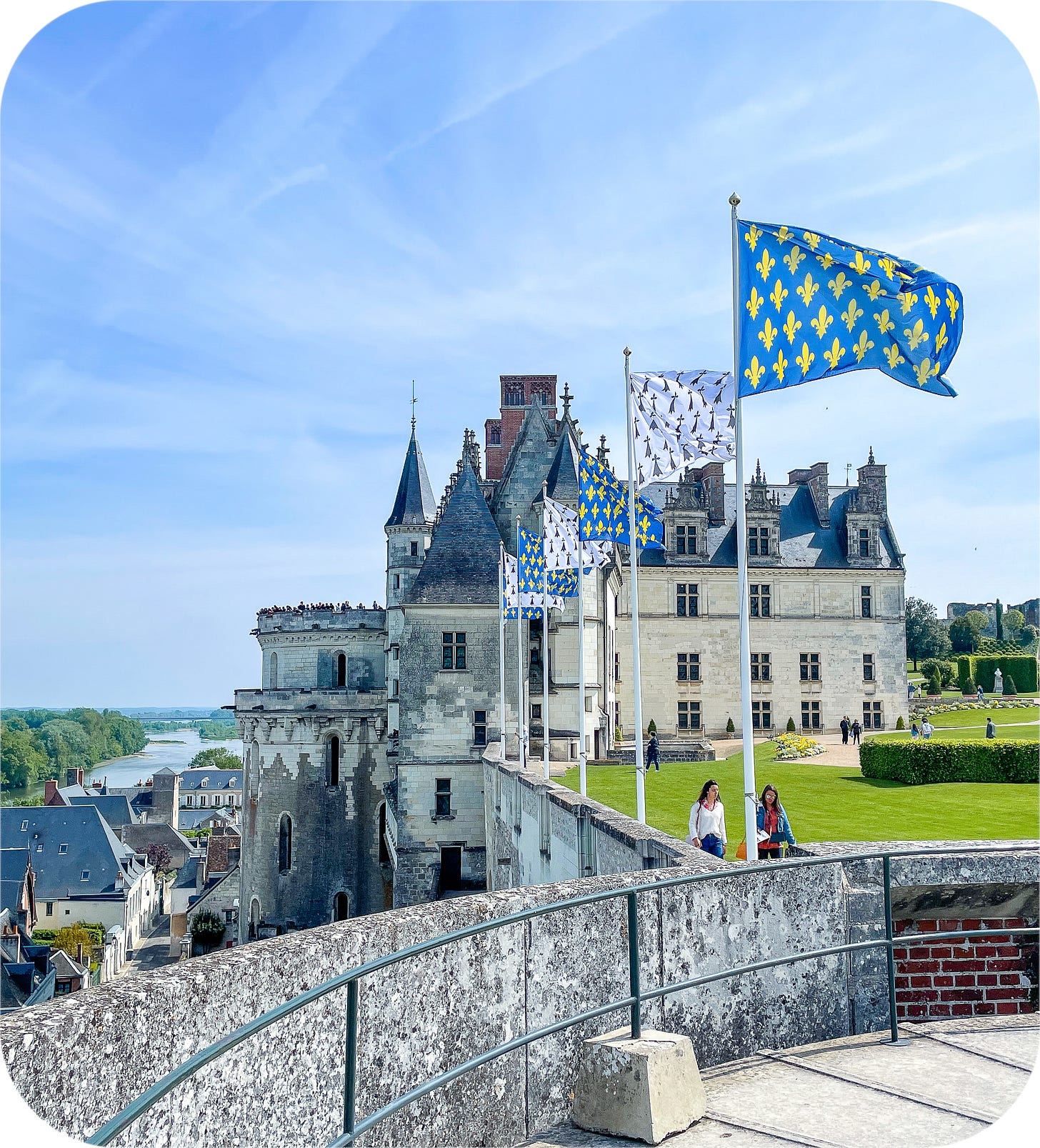
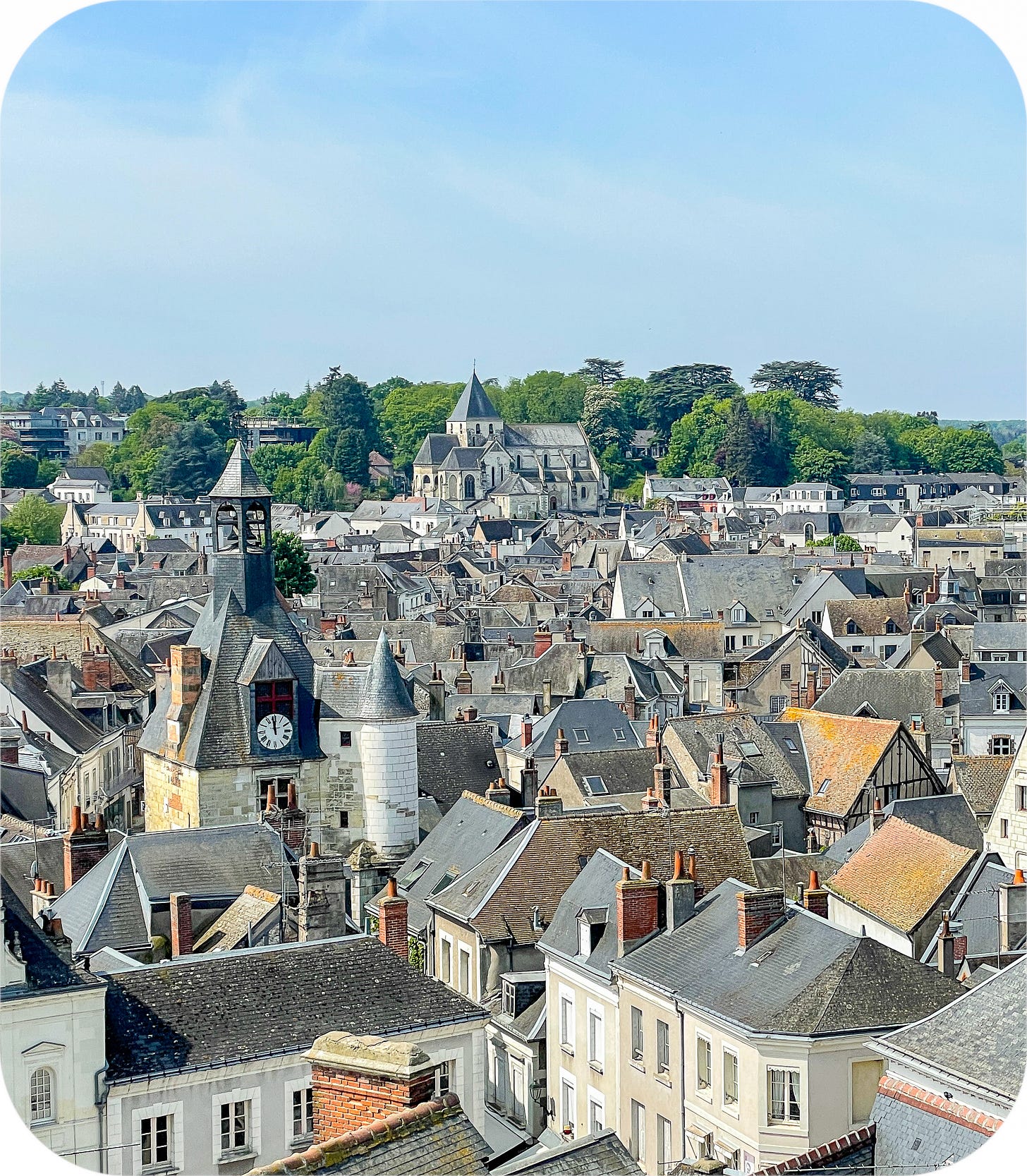

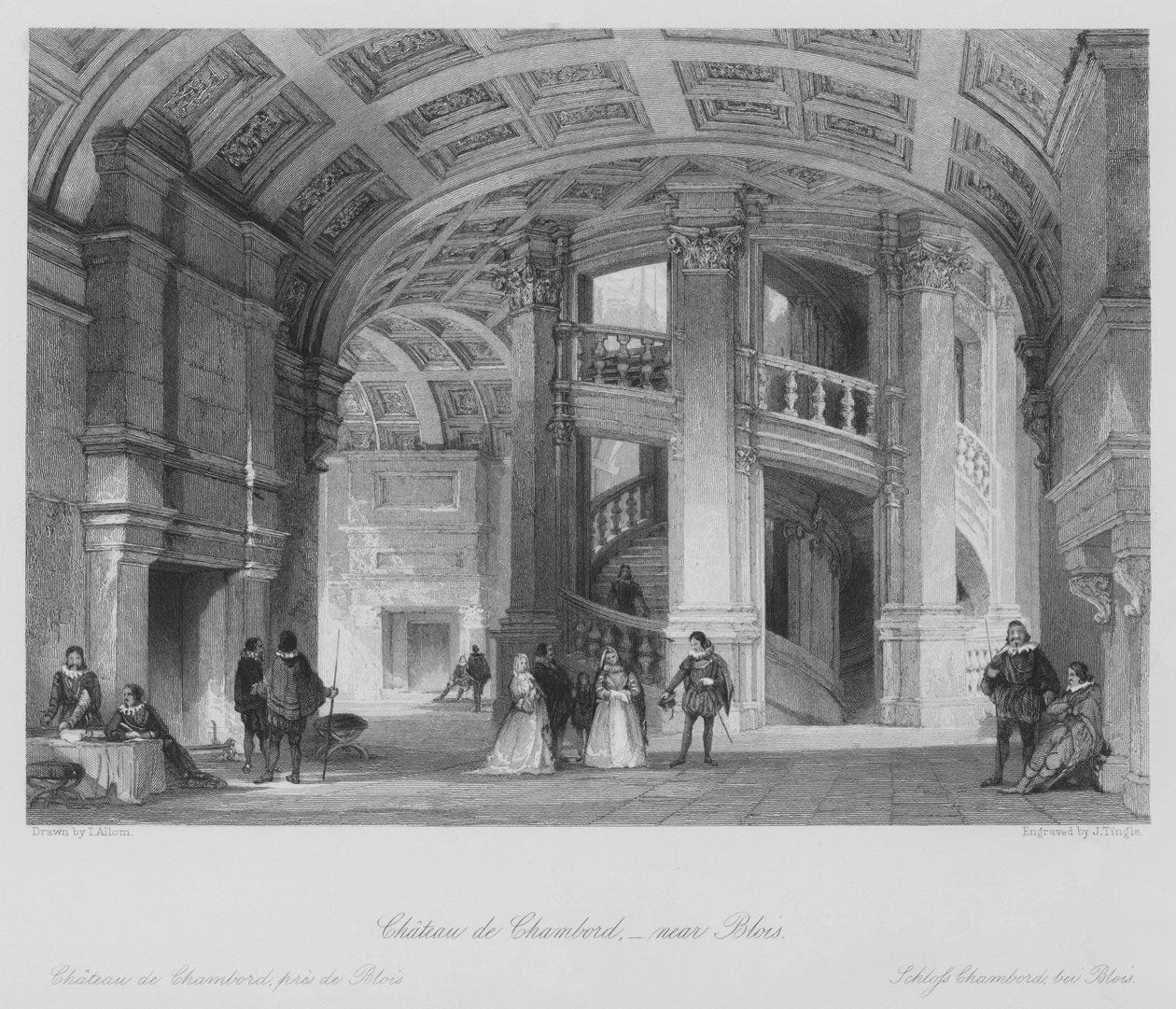
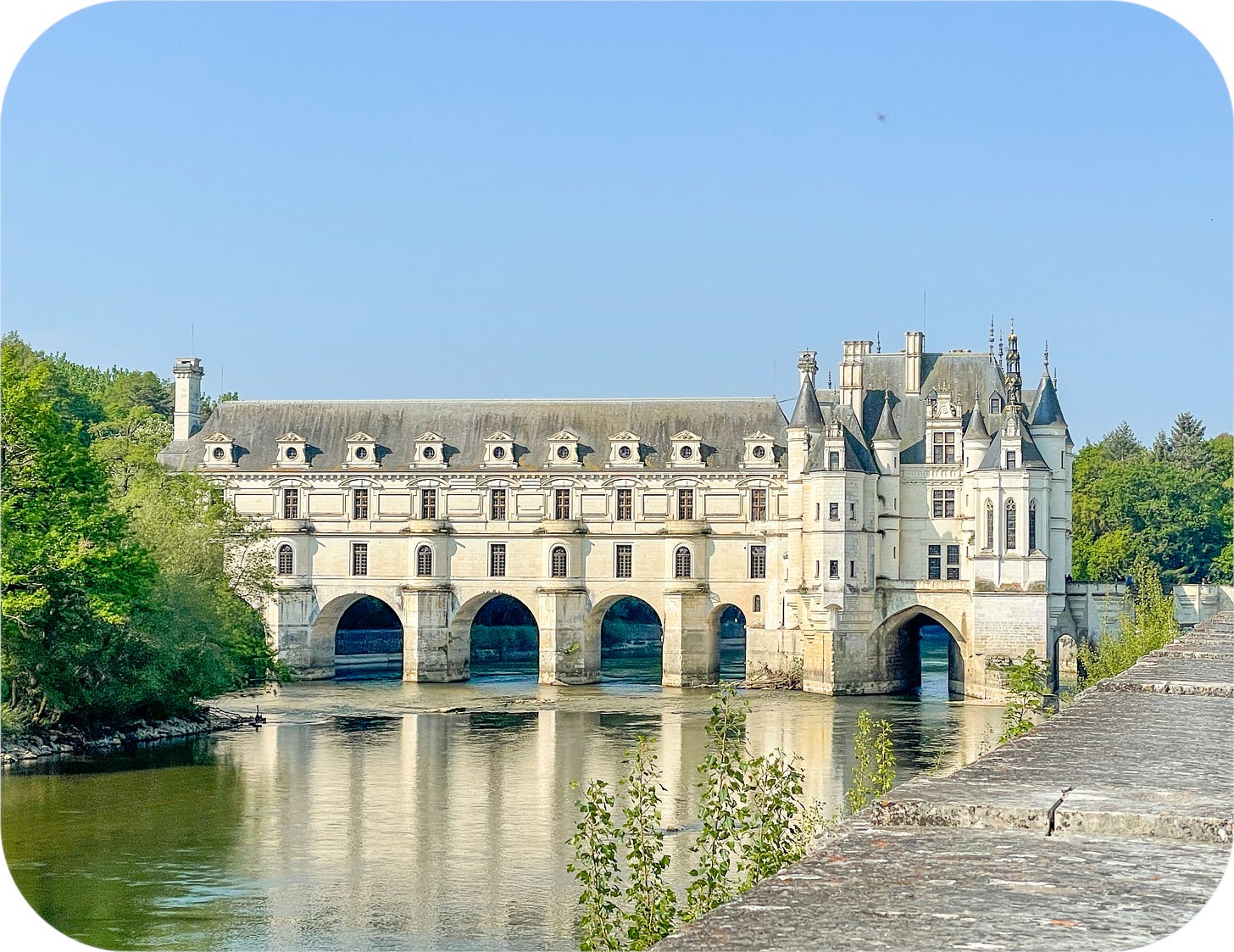
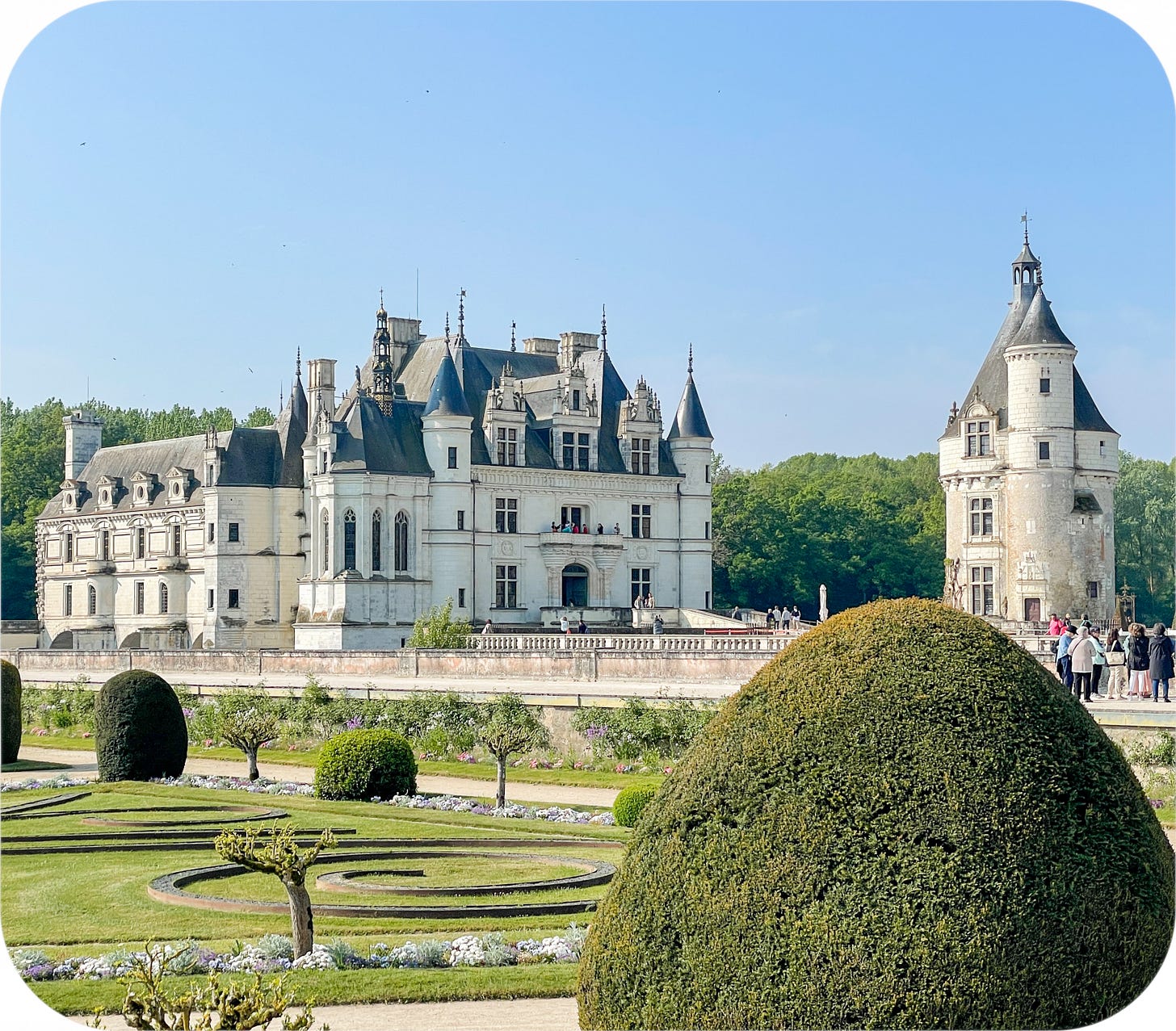
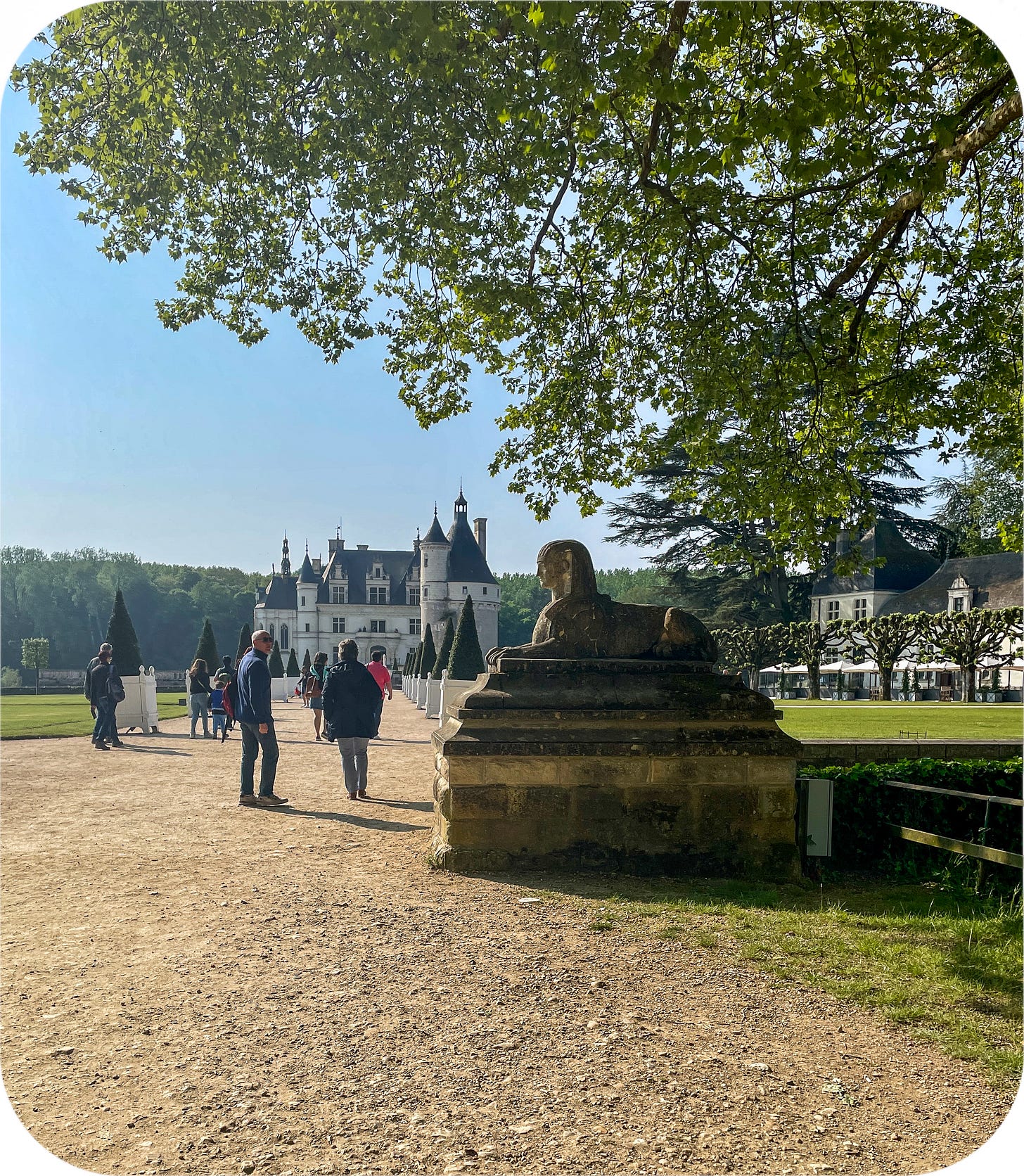

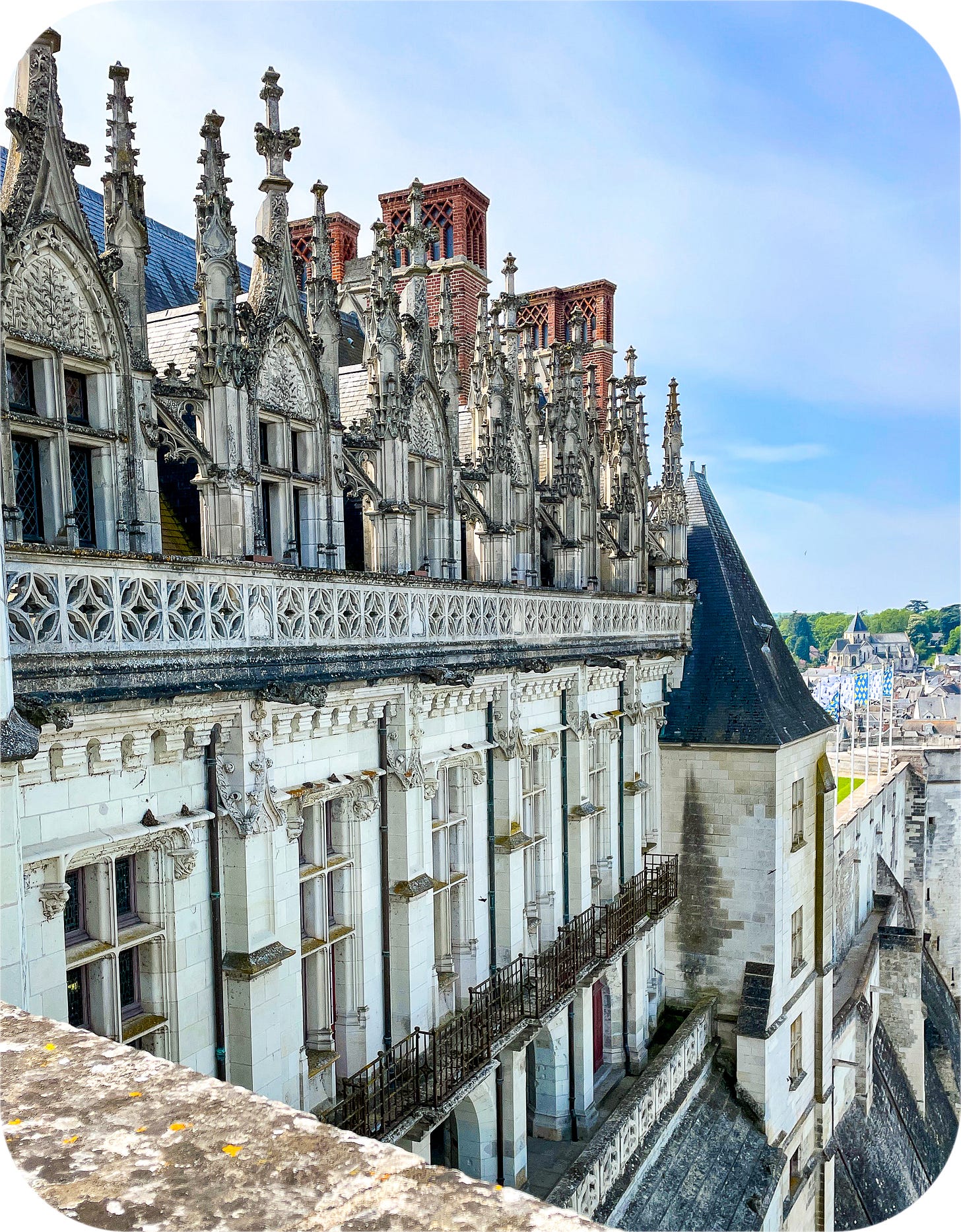



A lovely memory jog for me as I did this same circuit on my gap year
Thanks for this lovely tour. I can supply some details about the post-Francis I career of Chambord. Louis XIV ordered renovations to the royal apartments, which, as we read in the journal of the Marquis de Dangeau, he came to inspect in the summer of 1685. He never went back again. Louis XV later gave Chambord to his parents-in-law, Stanislas Leczinski and Catherine Opalinska, after his marriage to their daughter Marie in 1725. They stayed for nearly a decade, but didn't seem sad to leave it. It was then home to the Maréchal de Saxe, a son of Augustus III of Saxony and Poland, who was given it for the victories he won for Louis XV during the War of the Austrian Succession. It's his decor that we see in the royal apartments today, for example in the King's bedchamber. Saxe died in the chateau in 1750. The last royal residents were members of the Parma branch of the Bourbon family, who inherited the place in 1883 and sold it to the state in 1930, as you note. I have't yet visited Chambord myself -- Versailles and Paris seem to suck up all my time and energy when I'm in France -- but you've convinced me that when I do go to Chambord I should go on May Day. Cheers!